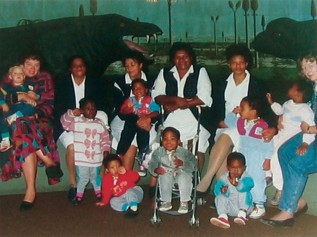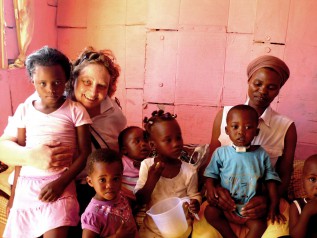Looking Back
The Red Cross War Memorial Children’s Hospital stands out as the leading paediatric care facility in sub-Saharan Africa, and one of a kind in the public sector.

The Breatheasy Programme is a nurse-led initiative co-ordinated by Sister Jane Booth with a multi-disciplinary team of health care professionals. It is a unique, cost-effective programme that enables parents to provide safe and competent home care to children reliant on a tracheostomy or artificial ventilation.
The programme was founded in 1989 Sister Jane Booth, Professors Louis Reynolds and Max Klein, as well as social worker Sheila Berger. Prior to this, 25-30 child patients permanently occupied the equivalent of an entire ward at the Children’s Hospital. Such was the instant relief to the system afforded by the Breatheasy Homecare Programme, that the plans to build an entire paediatric ward commissioned for long-term tracheostomy patients at City Hospital were subsequently abandoned. Today, as a result of the innovation of empowering mothers with the knowledge, skills and resources, tracheostomy patients can be monitored at home by the Breatheasy Programme.
The net benefits of this home care initiative cannot be overstated:
- It improves the children’s quality of life and development as they grow up within their families and are integrated into their communities
- Travel time and costs can be prohibitive for parents from rural areas who have other children to support and these little patients used to become wards of the state hospital
- It empowers countless mothers and caregivers by affirming their ability to manage their children’s needs
- It liberates hospital beds and critical care resources at the Children’s Hospital
- It has saved the hospital over R1.2 million per year, per patient. This saving is based on the average daily cost to government of R 3 300 to hospitalize a child and translates into a staggering annual saving of R120 million, given that an average of more than 100 children are monitored by the Breatheasy Programme as outpatients recent years.
- The incidence of complication such as blocked tracheostomy tubes and infection are lower at home than in hospital
1993

In a compassionate attempt to ‘normalise’ the lives of their child patients, Jane Booth and some of the TVHCP nursing staff regularly volunteered their time on weekend outings (photo: Prof. Max Klein).
2011

Sister Booth and her child patient surrounded by his siblings and mother after being settled into his home on discharge from hospital.
